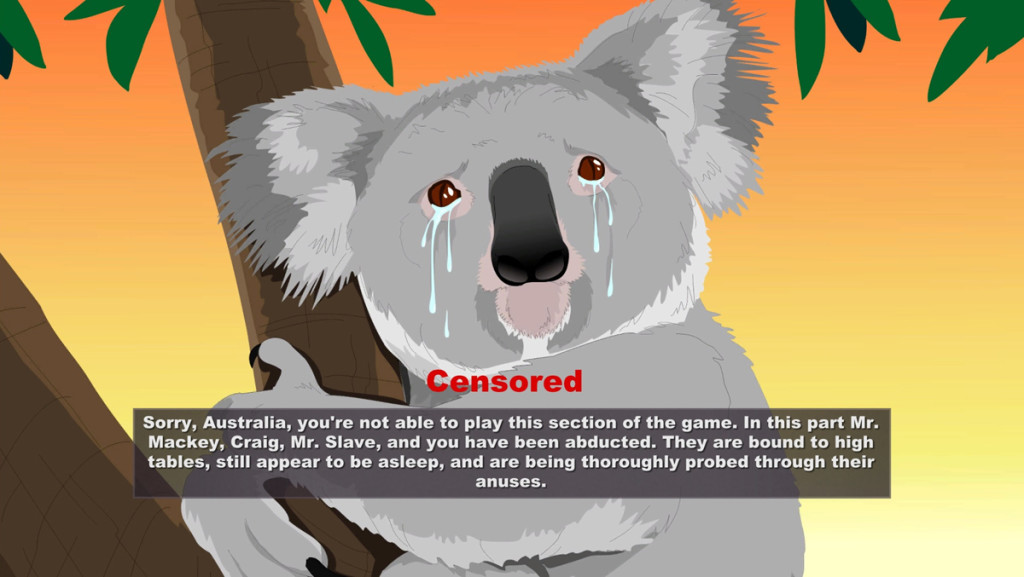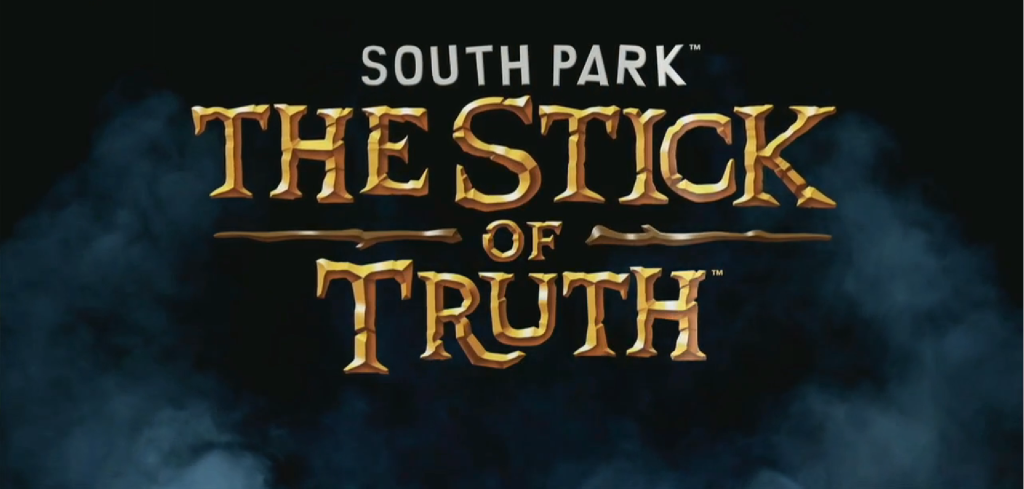South Park is an undeniable entertainment juggernaut. With nearly 20 years of air time, five Primetime Emmy Awards and highly successful jaunts into the entrainment worlds of film, sound and stage, it seems as though there is no medium that creators Trey Parker and Matt Stone cannot conquer. Yet despite all these accolades, there has never been a truly great video game that captured the tone, humour and crass nature of the original series. South Park: The Stick of Truth can finally lay that title to rest. With the stellar combination a strong script written by Parker and Stone themselves, mixed with a unique, enjoyable RPG produced by developer Obsidian Entertainment, The Stick of Truth is a rare treat for all.
Let’s get one thing perfectly clear from the start: If you are not a fan of South Park’s irreverent, often tasteless and flat-out offensive style of humour, then this is not the game for you. From the opening title card to credits, this game is explicitly designed around and catered towards devotees of the crass cartoon. The player controls the New Kid in South Park, who is quickly swept up in the epic war dividing the children of the sleepy Colorado town: Humans against Elves, in the mighty quest for control of the Stick of Truth.
As it is in most episodes of South Park, this story conceit is merely the diving off point for the trademark bizarre, confusing and bombastic twists that befall the New Kid in his quest along the way. As the story interweaves with the large cast of supporting characters from the community, the core plot similarly alters and loops around, combining half a dozen separate plot threads into a single bizarre tapestry. If the story synopsis sounds vague, it is on purpose. As the game is strongly built upon the importance of humour, spoiling individual plot points would undercut any number of fantastic jokes and set ups. All I will say is that awash in a sea of terrific laughs, the game skewers one of its most prescient, direct jabs directly at the overuse of the Nazi Zombie trope in the gaming industry perfectly.

Whilst the humour of the game is easily its greatest strength, the bizarre attention to detail given to the presentation overall is what makes it truly magical. What previous South Park games have failed to achieve most egregiously is an appropriate emulation of the overall South Park experience, from the layout and feel of the world to the visual style and soundtrack. Thankfully, exploring this virtualised version of the town of South Park feels immaculately similar to that of the television series. The town feels appropriately sized and mapped out; populated with the various unnamed South Park townsfolk tottering about, completing their South Park-y business. Even the oddly bombastic soundtrack and primitive paper cut-out appearance is recreated with millimetric precision, making it difficult to critique in a traditional way. It’s not a graphical masterpiece, nor is the soundtrack necessarily perfect, but that’s how the show is made. It can look and sound kind of crappy, but it’s the same kind of crappy that the series has been executing successfully since 1997.
Most licensed games focus on hitting the various cultural touchstones and classic pieces of humour from the series so strongly that the entire experience is diluted as a result. Players in these titles are winked at and prodded constantly, when some small reference from long ago is stretched and disfigured beyond its own capacity. South Park escapes this by painting the world in the broadest strokes possible. Cartman is still a jerk and Kenny is still poor, but for the most part, there’s no overbearing recreation of previous jokes and plotlines. Parker and Stone have instead elected to use these core tenets at the base from which to layer on as much new material as possible. Placing these old characters with recognizable traits into a fantasy setting opens up a world of humour-related possibilities. Having Jimmy play the bard, for instance, is stroke of undeniable genius with dozens of jokes branching off as a result.

The deeper cuts and meta-humour is largely relegated to appearing either in the background of shots or as miscellaneous “junk” items. These items are scattered intelligently amongst the numerous lootable locations within South Park, adding background flavour and context to the world. The various bedrooms and garages of central characters are populated with these collectible cameos from previous episodes. The items are accompanied by a small one-liner, identifiable to only those who know its specific tale. To those on the inside, it’s a chuckle-inducing, small reference; to those on the outside, it’s just world flavour. With a series so jam-packed with lore and references, this seems like the perfect way to salute fans without alienating outsiders.
That same level of care and intelligence was clearly taken when the side quests were crafted. Bitingly funny at times, these are used to hit some of the larger, more recognizable humour notes from the past. They’re varied enough and written so strongly that despite their meagre completion rewards, they are a joy to engage with.

New equipment serves as the primary form of reward for completing quests and helping strangers. Equipment is used to customize the New Kid, both for aesthetics and combat. The various weapons, costumes, hairstyles and makeup can be used to make your New Kid completely original, with a dizzying array of possible combinations. In combat, the weaponry and buffs equipped combine together to induce a myriad of status effects, elemental strikes and protective auras. In theory, it adds up to a deep, well rounded combat experience, but unfortunately, it is simply a little too shallow to be thoroughly engaging. Combat harkens back to the 16-bit era RPG classics, controlling like a bizarre mix of Earthbound and Super Mario RPG. Players can take a quick action, like using a potion, which is followed by either a magical, ranged, melee or special attack. These are executed in an active battle fashion: Completing a well timed button press or manoeuvre of the thumb stick will add extra damage and effects. Whilst the mechanics are sound, they are easily exploitable: loading up on certain effects, such as bleeding, completely trivializes the combat system. Whilst it never devolves to being mundane, the only thing that keeps it particularly interesting is the ever-expanding, increasingly bizarre cadre of villainy to tackle.
All in all, the combat is a minor quibble amongst an ocean of excellence. The Stick of Truth is light and enjoyable fun, a perfect recreation of the show. There is a surprisingly deep level of polish and thought that went into crating such an exemplary title that it will easily be circulating around top lists at the end of the year. As a pure, distilled entertainment experience for around a dozen hours, you are likely not going to find anything better than The Stick of Truth. It is a true master class in how to capture the look, feel, sound and joy of a virtual world.
Rating: 9.5/10

